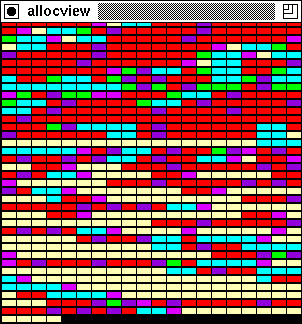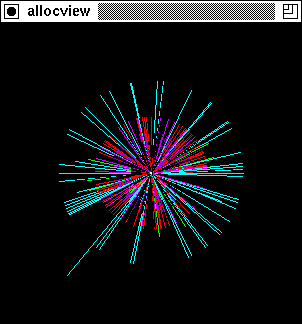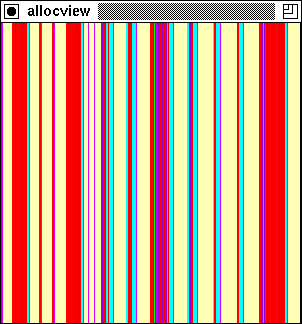
The University of Arizona
Tucson, Arizona
IPD197a
March 24, 1996
http://www.cs.arizona.edu/icon/docs/ipd197.htm
 | Department of Computer
Science The University of Arizona Tucson, Arizona IPD197a March 24, 1996 http://www.cs.arizona.edu/icon/docs/ipd197.htm |
allocview, takes a different
approach. It provides a variety of ways for viewing storage allocation that
are more metaphorical than literal.See the examples at the end of this report.blinker a blinking light curtain a beaded curtain flowers flowers with petals haystack randomly placed straws mosaic a mosaic of tiles nova an exploding star phoenix buildings rising from the ashes pinwheel revolving blades pulsar a pulsating star rays random rays splatter random dots on a canvas tapestry woven threads vortex concentric rings web a random cobweb weed a randomly growing weed
allocview is run, one of the views listed above can be
selected. Multiple views can be obtained using Eve[ 2].allocview is run as follows:
where program is the program whose allocation is to be monitored. Standard input and output for program can be specified in the usual fashion.allocview [options] program [arguments]
-v view, default "pinwheel" -H height of view in pixels, default 300 -W width of view in pixels, default 300 -x number of columns (where applicable), default 30 -y number of rows (where applicable), default 30 -s number of sectors (where applicable), default 240
allocview, the same color is used for such related
types. (Co-expression allocation is not shown in allocview.) mosaic
mosaic nova
nova pinwheel
pinwheel splatter
splatter tapestry
tapestry web
web